Effectiveness of Implicit Beamforming with Large Number of Antennas Using Calibration Technique in Multi-User MIMO System
Abstract
1. Introduction
2. Problems with CSI Feedback and Overview of IBF
2.1. Problems with CSI Feedback
2.2. IBF
3. Calibration Circuit and Testbed for a Large Number of Antennas
3.1. Basic Calibration Principle
3.2. Testbed Configuration and Performance
4. Channel Capacity and Radiation Pattern Given by Calibration Method
5. Throughput Performance Using IEEE802.11ac Signals
6. Conclusions
Acknowledgments
Author Contributions
Conflicts of Interest
References
- European Telecommunications Standards Institute. Feasibility Study for Further Advancement for E-UTRA (LTE-Advanced); 3GPP TS36.912 V9.1.0; European Telecommunications Standards Institute: Antibes, France, 2010. [Google Scholar]
- Thang, H. Summary of 3GPP TSG-RAN Workshop on Release 12 and Onward. In Proceedings of the 3GPP RAN Plenary, Ljubljana, Slovenia, November 2012. [Google Scholar]
- European Telecommunications Standards Institute. Scenarios and Requirements for Small Cell Enhancements for E-UTRAN; European Telecommunications Standards Institute: Antibes, France, October 2012. [Google Scholar]
- Foschini, G.J.; Gans, M.J. On limits of wireless communications in a fading environment when using multiple antennas. Wirel. Pers. Commun. 1998, 6, 311–335. [Google Scholar] [CrossRef]
- Paulaj, A.; Nabar, R.; Gore, D. Introduction to Space-Time Wireless Communications; Cambridge University Press: Cambridge, UK, 2003. [Google Scholar]
- Khandekar, A.; Bhushan, N.; Ji, T.; Vanghi, V. LTE advanced: Heterogeneous networks. In Proceedings of the 2010 European Wireless Conference (EW), Lucca, Italy, 12–15 April 2010; pp. 978–982. [Google Scholar]
- IEEE 802.11n. Available online: http://www.ieee802.org/11n/ (accessed on 7 September 2009).
- Spencer, Q.H.; Peel, C.B.; Swindlehurst, A.L.; Haardt, M. An introduction to the multi-user MIMO downlink. IEEE Commun. Mag. 2004, 42, 60–67. [Google Scholar] [CrossRef]
- Gesbert, D.; Kountouris, M.; Heath, R.W., Jr.; Chae, C.-B.; Salzer, T. Shifting the MIMO paradigm. IEEE Signal Process. Mag. 2007, 24, 36–46. [Google Scholar] [CrossRef]
- IEEE 802.11ac. Available online: http://www.ieee802.org/11ac/ (accessed on 7 January 2014).
- Larsson, E.G. Very Large MIMO Systems. In Proceedings of the 2012 IEEE International Conference on Acoustics, Speech and Signal Processing, Kyoto, Japan, 25–30 March 2012. [Google Scholar]
- Rusek, F.; Persson, D.; Lau, B.K.; Larsson, E.G.; Marzetta, T.L.; Edfors, O.; Tufvesson, F. Scaling up MIMO: Opportunities and challenges with very large MIMO. IEEE Signal Process. Mag. 2013, 30, 40–60. [Google Scholar] [CrossRef]
- Hoydis, J.; ten Brink, S.; Debbah, M. Massive MIMO in the UL/DL of cellular networks: How many antennas do we need? IEEE J. Sel. Areas Commun. 2013, 31, 160–171. [Google Scholar] [CrossRef]
- Love, D.J.; Heath, R.W., Jr. What is the value of limited feedback for MIMO channels. IEEE Commun. Mag. 2004, 42, 54–59. [Google Scholar] [CrossRef]
- Love, D.J.; Heath, R.W., Jr.; Lau, V.K.N.; Gesbert, D.; Rao, B.D.; Andrews, M. An overview of limited feedback in wireless communication systems. IEEE J. Sel. Areas Commun. 2008, 26, 1341–1365. [Google Scholar] [CrossRef]
- Hiraguri, T.; Nishimori, K. Survey of transmission methods and efficiency using MIMO technologies for wireless LAN systems. IEICE Trans. Commun. 2015, E98-B, 1250–1267. [Google Scholar] [CrossRef]
- Murakami, T.; Fukuzono, H.; Takatori, Y.; Mizoguchi, M. Multiuser MIMO with implicit channel feedback in massive antenna systems. IEICE Commun. Express 2013, 2, 336–342. [Google Scholar] [CrossRef]
- Litva, J.; Lo, T.K. Digital Beam Forming in Wireless Communication; Artech House: Norwood, MA, USA, 1996. [Google Scholar]
- Tsoulos, G.; McGeehan, J.; Beach, M. Space division multiple access (SDMA) field trials. 2. Calibration and linearity issues. IEE Proc. Radar Sonar Navig. 1998, 145, 79–84. [Google Scholar] [CrossRef]
- Nishimori, K.; Cho, K.; Takatori, Y.; Hori, T. Automatic calibration method using transmitting signals of an adaptive array for TDD systems. IEEE Trans. Veh. Technol. 2001, 50, 1636–1640. [Google Scholar] [CrossRef]
- Nishimori, K.; Cho, K.; Takatori, Y.; Hori, T. A novel configuration for realizing automatic calibration of adaptive array using dispersed SPDT switches for TDD systems. IEICE Trans. Commun. 2001, E84-B, 2516–2522. [Google Scholar]
- Hara, Y.; Yano, Y.; Kubo, H. Antenna array calibration using frequency selection in OFDMA/TDD Systems. In Proceedings of the IEEE GLOBECOM 2008 Global Telecommunications Conference, New Orleans, LA, USA, 30 November–4 December 2008. [Google Scholar]
- Zetterberg, P. Experimental investigation of TDD reciprocity-based zero-forcing transmit precoding. EURASIP J. Adv. Signal Process. 2011. [Google Scholar] [CrossRef]
- Shi, J.; Luo, Q.; You, M. An efficient method for enhancing TDD over the air reciprocity calibration. In Proceedings of the 2011 IEEE Wireless Communications and Networking Conference (WCNC), Cancun, Quintana Roo, Mexico, 28–31 March 2011; pp. 339–344. [Google Scholar]
- Vieira, J.; Rusek, F.; Tufvesson, F. Reciprocity calibration methods for massive MIMO based on antenna coupling. In Proceedings of the 2014 IEEE Global Communications Conference (GLOBECOM), Austin, TX, USA, 8–12 December 2014. [Google Scholar]
- Vieira, J.; Malkowsky, S.; Nieman, K.; Miers, Z.; Kundargi, N.; Liu, L.; Wong, L.; Öwall, V.; Edfors, O.; Tufvesson, F. A flexible 100-antenna testbed for Massive MIMO. In Proceedings of the 2014 Globecom Workshops (GC Wkshps), Austin, TX, USA, 8–12 December 2014. [Google Scholar]
- Bjornson, E.; Hoydis, J.; Kountouris, M.; Debbah, M. Massive MIMO Systems With Non-Ideal Hardware: Energy Efficiency, Estimation, and Capacity Limits. IEEE Trans. Inf. Theory 2014, 60, 7112–7139. [Google Scholar] [CrossRef]
- Wireless LAN Medium Access Control (MAC) and Physical Layer (PHY) Specifications. Available online: http://ieeexplore.ieee.org/document/6560345/ (accessed on 24 October 2017).
- Winter, J.H. Smart antennas for wireless systems. IEEE Pers. Commun. Mag. 1998, 5, 23–27. [Google Scholar] [CrossRef]
- Joham, M.; Utschick, W.; Nossek, J.A. Linear Transmit Processing in MIMO. IEEE Trans. Signal Process. 2005, 53, 2700–2712. [Google Scholar] [CrossRef]
- Recommendation ITU-R P. 1238-4, P Series. Available online: https://www.itu.int/rec/R-REC-P.1238/en (accessed on 24 October 2017).
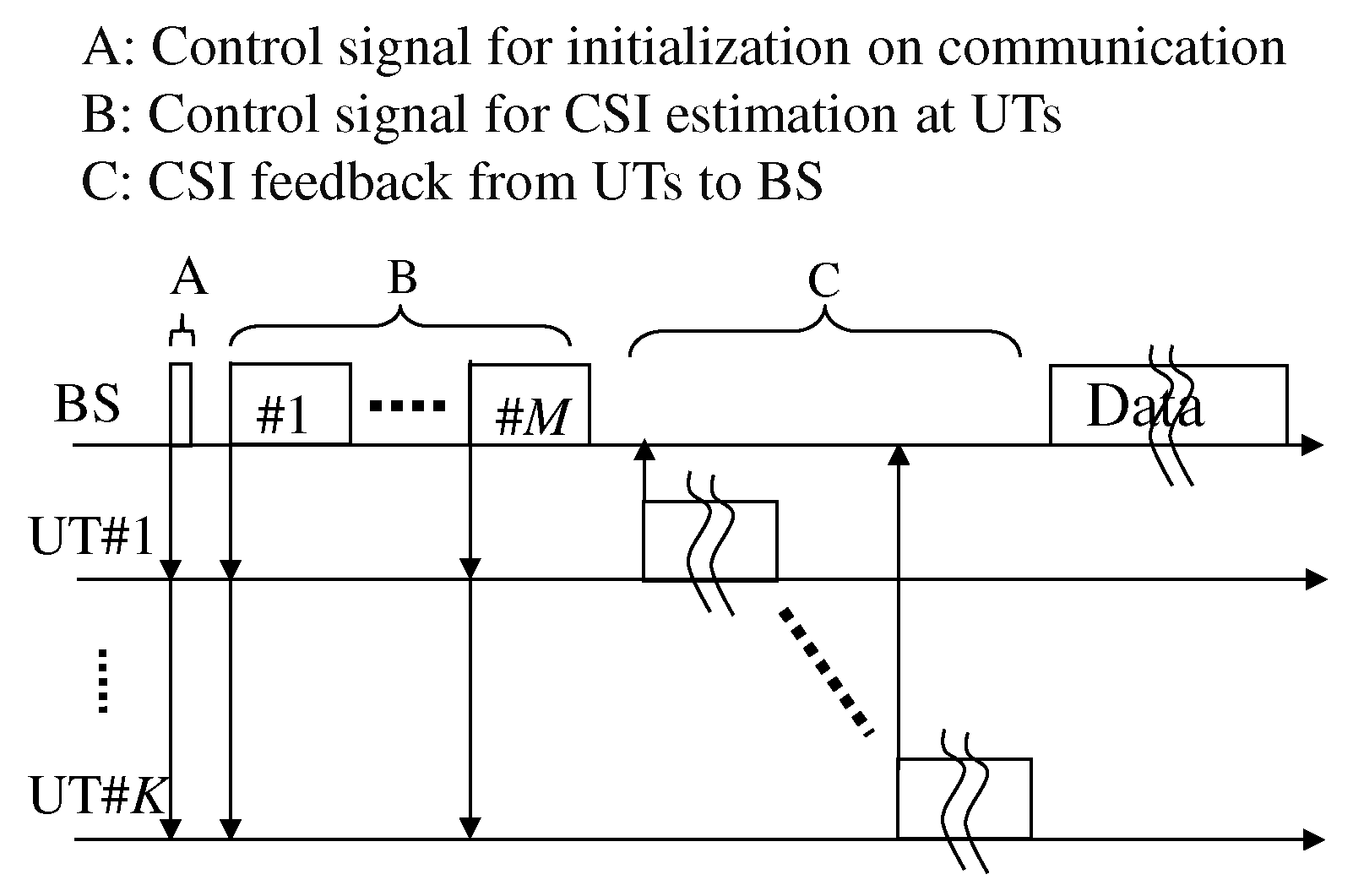
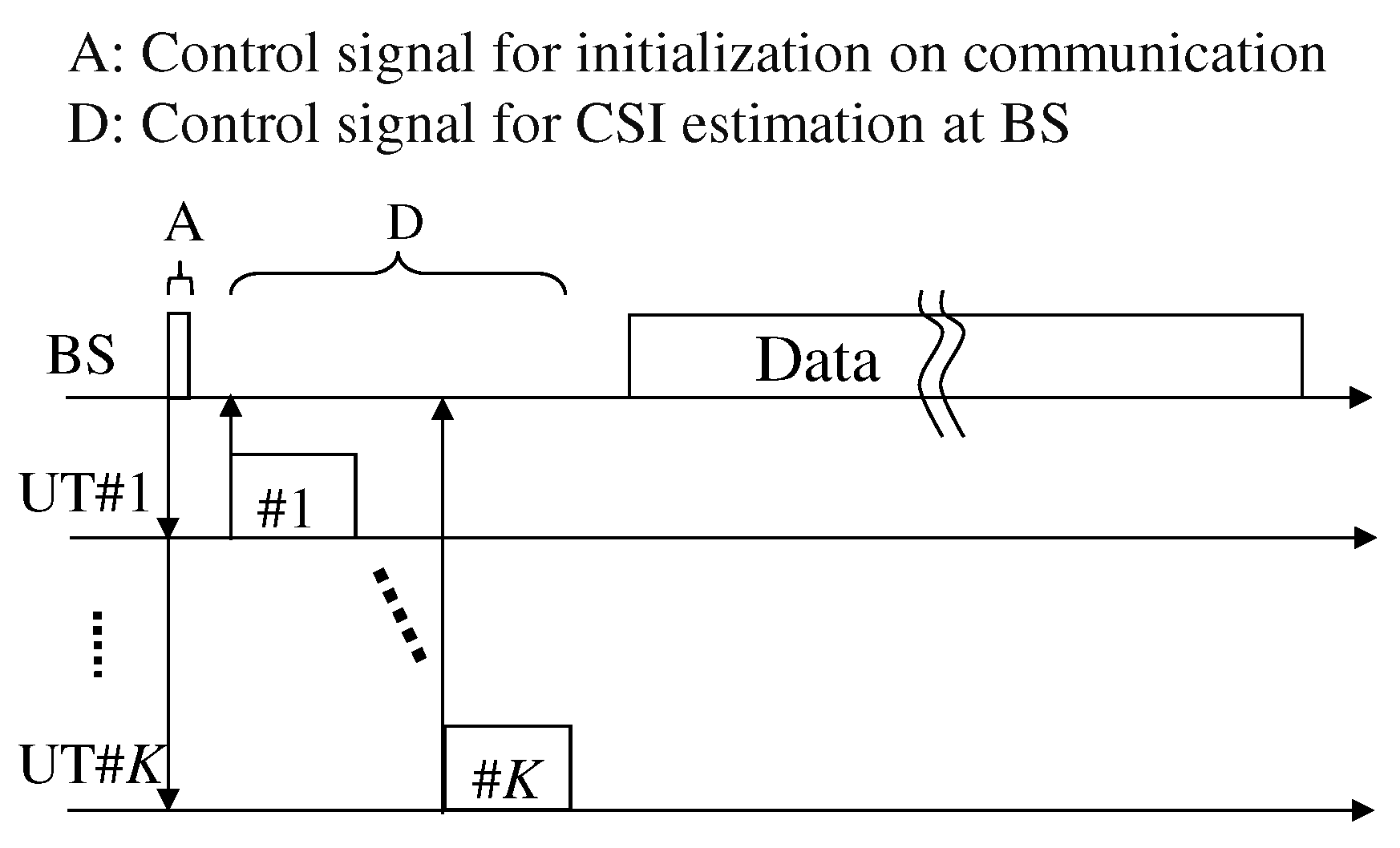
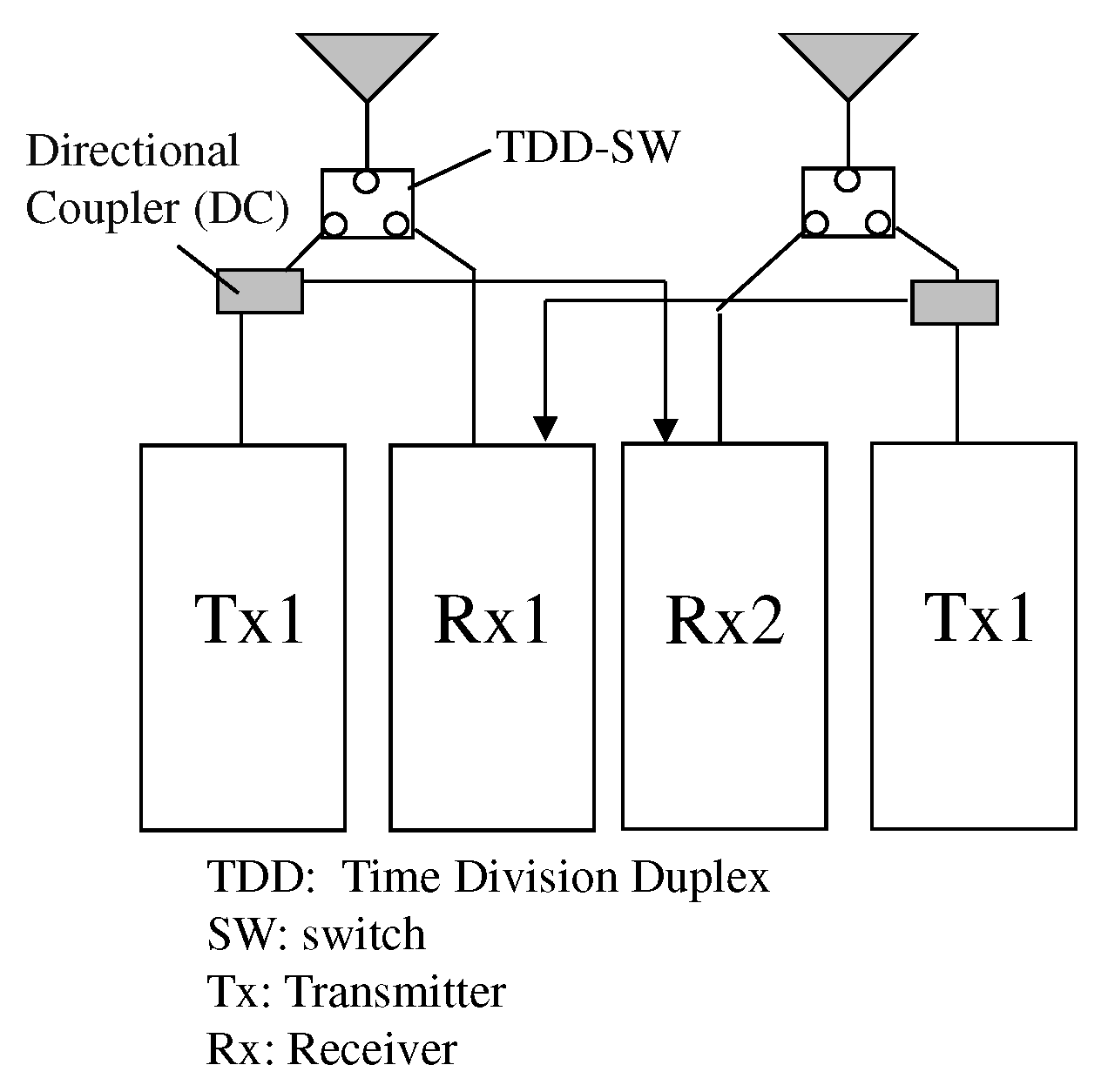
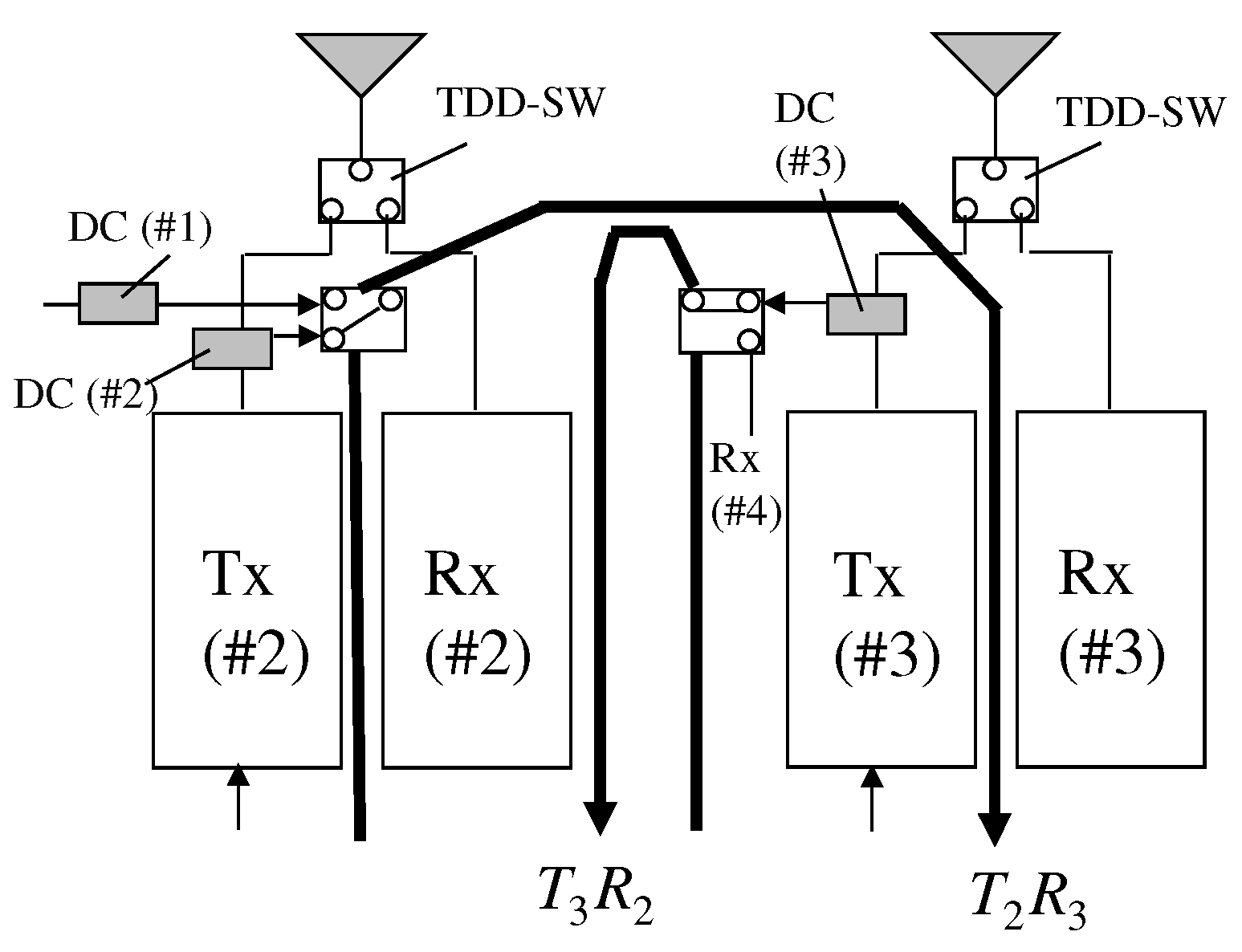
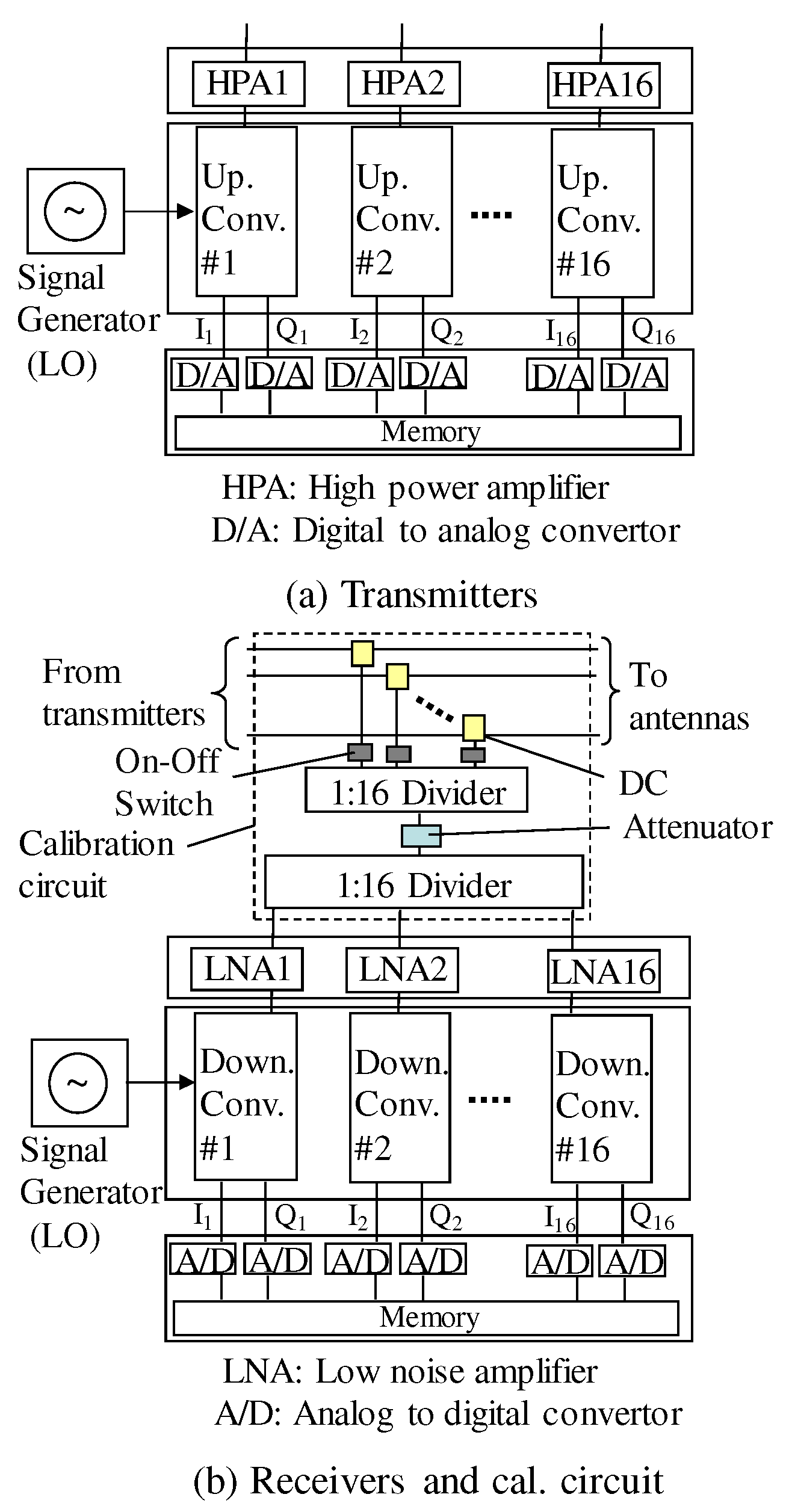

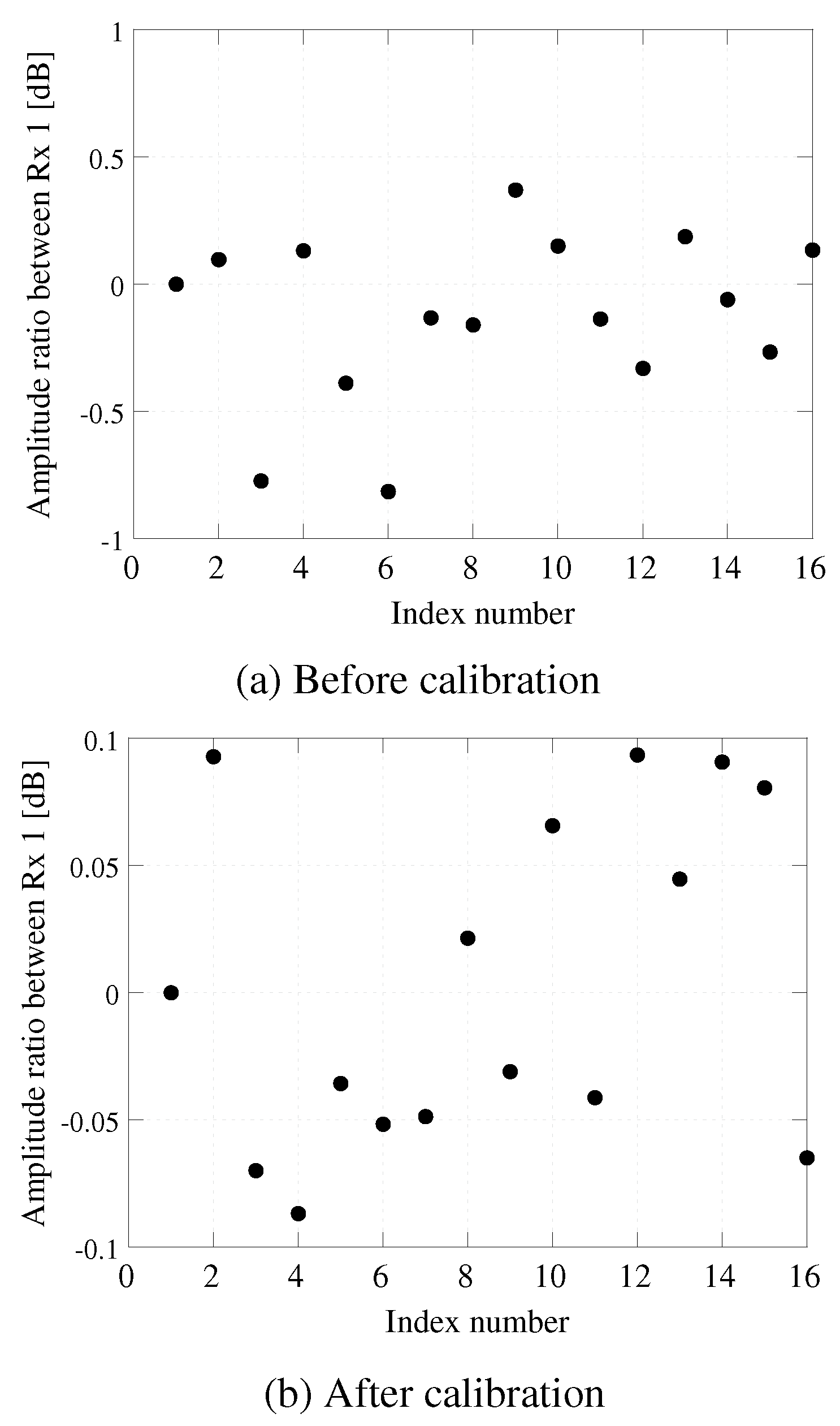
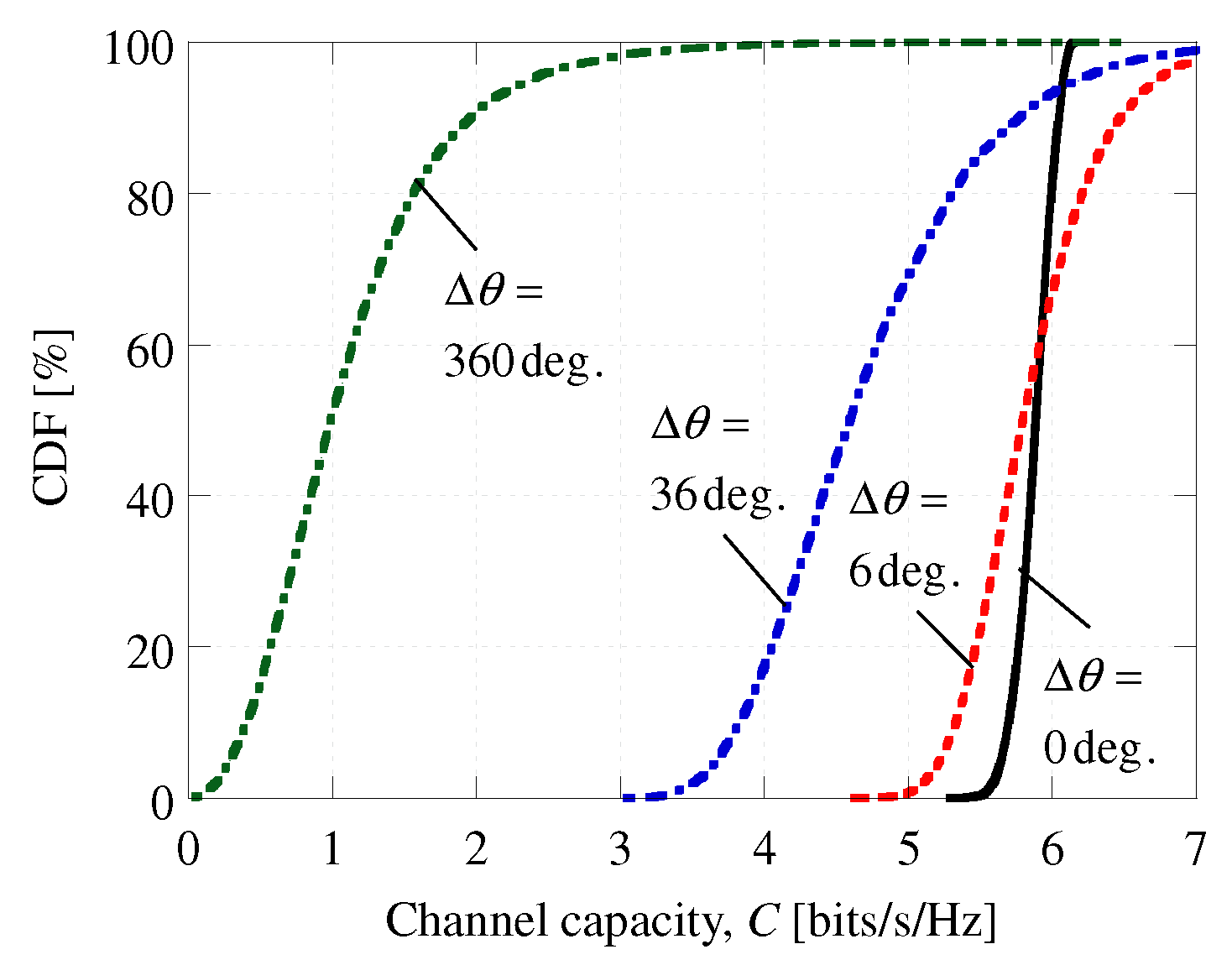

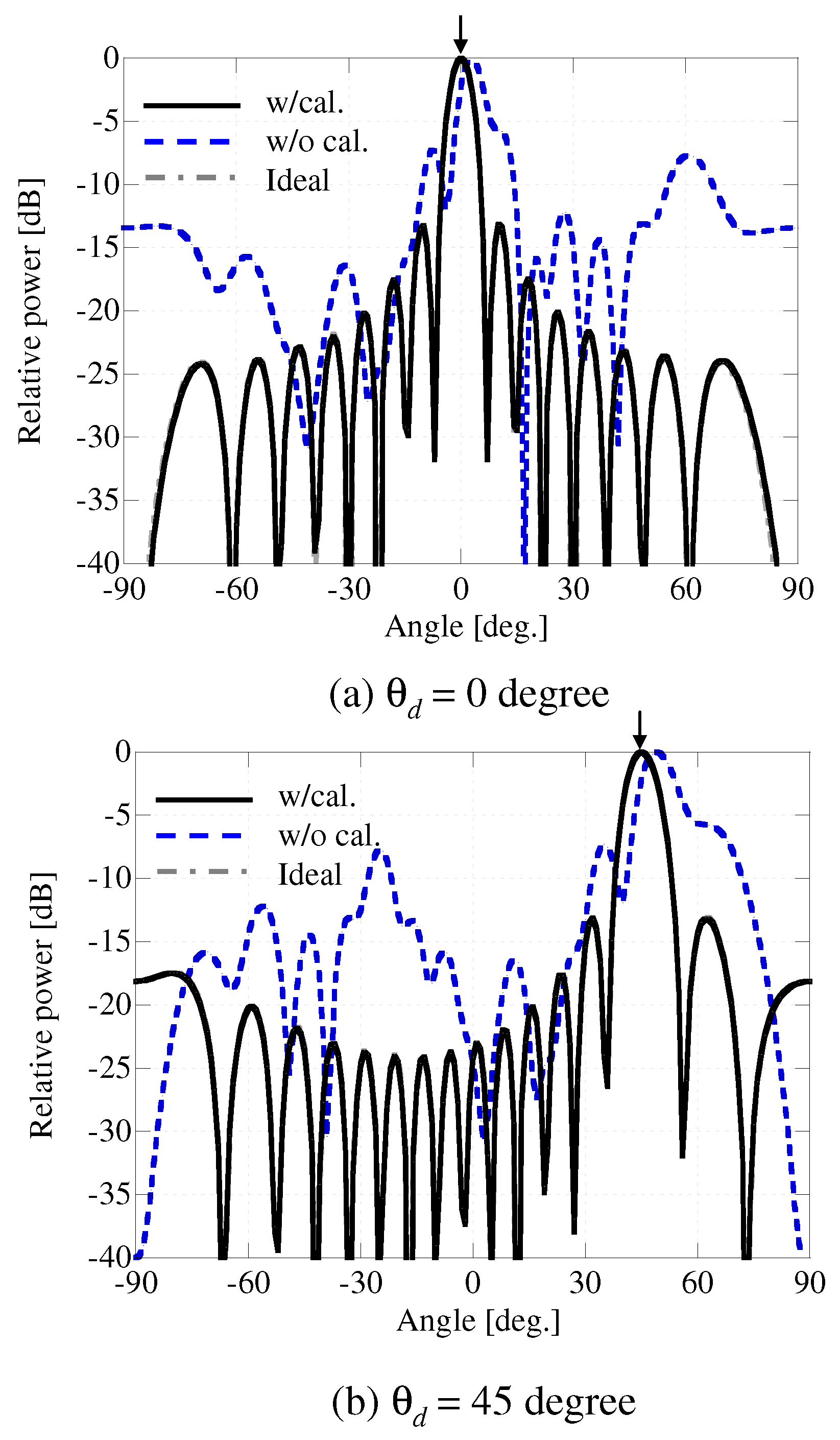
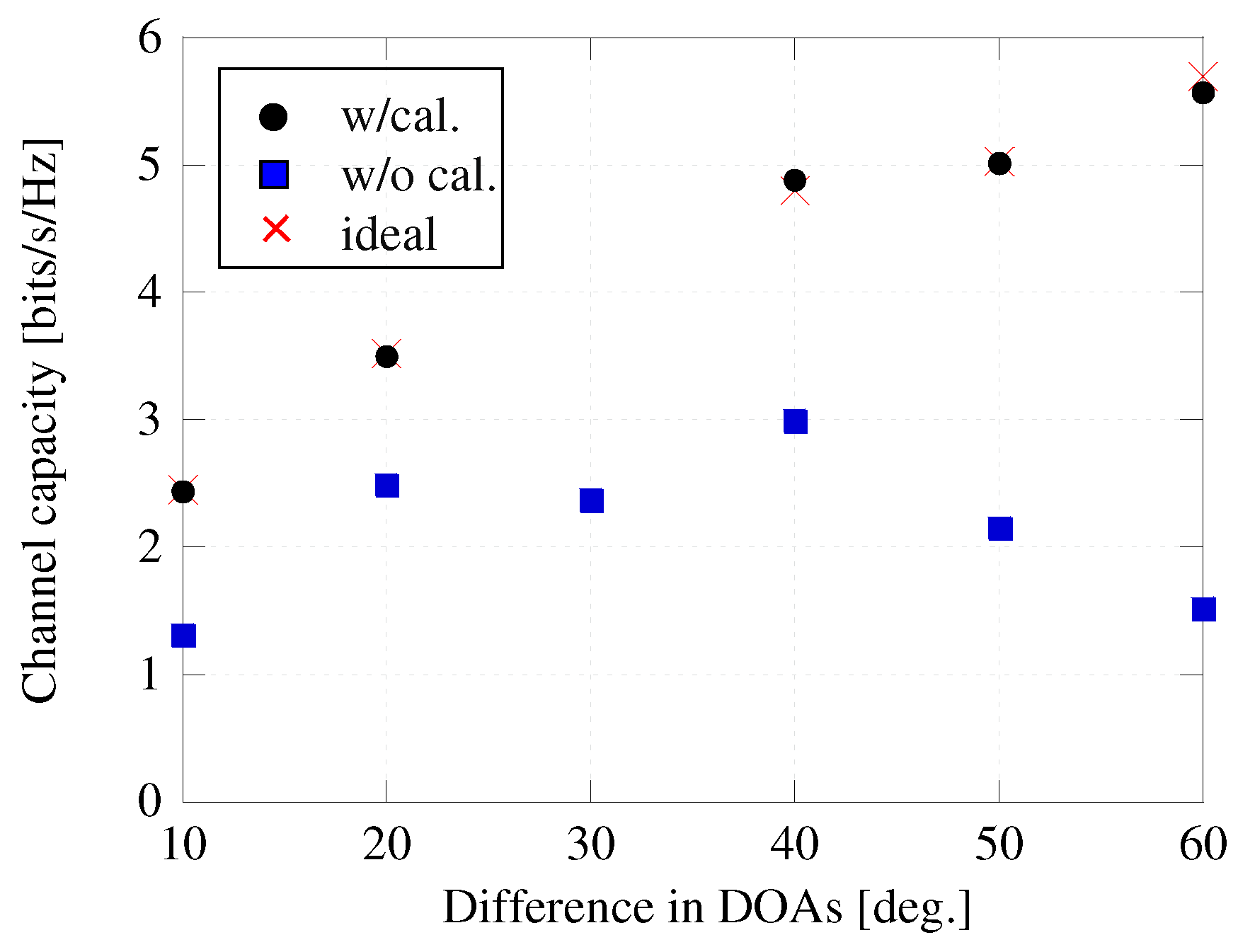
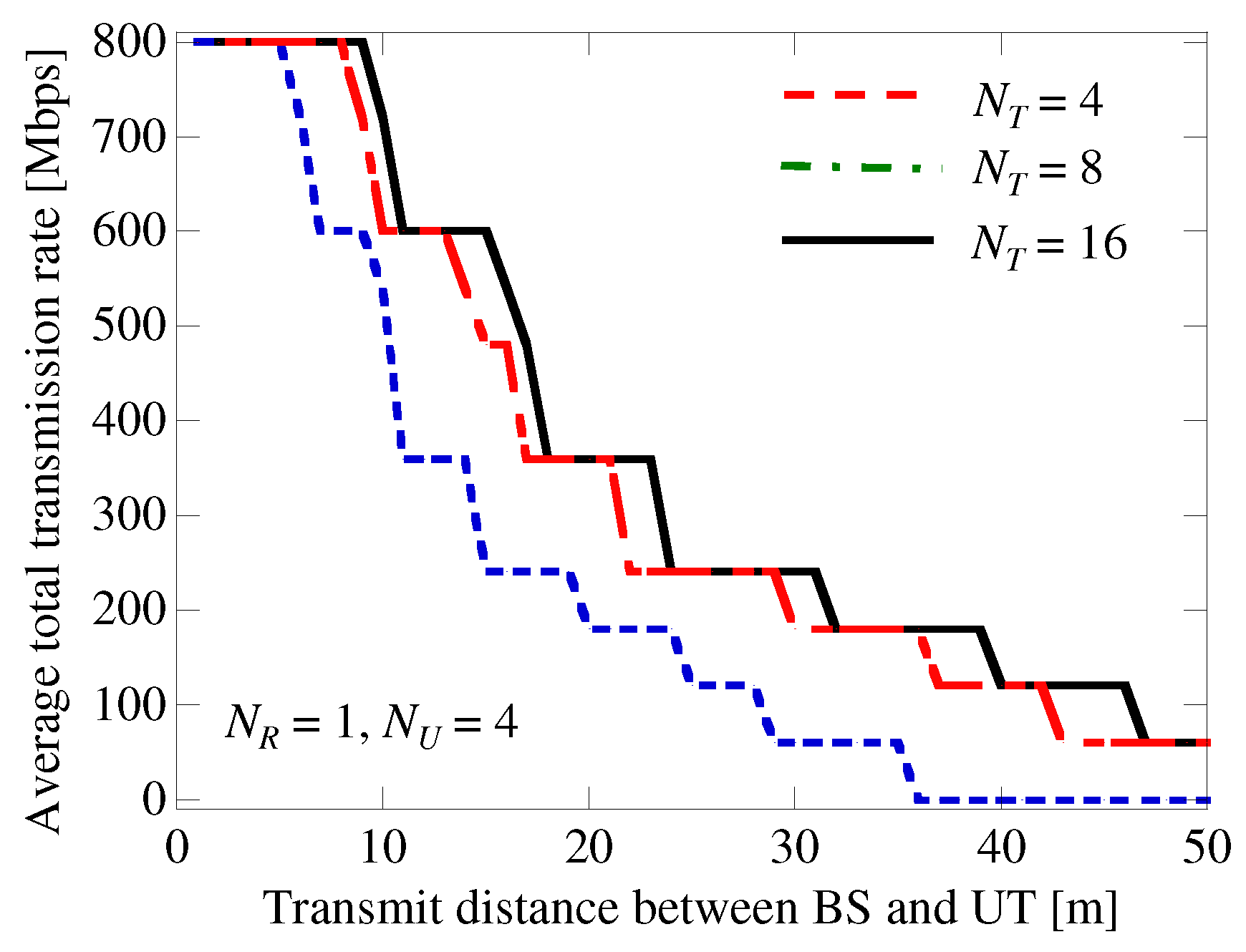
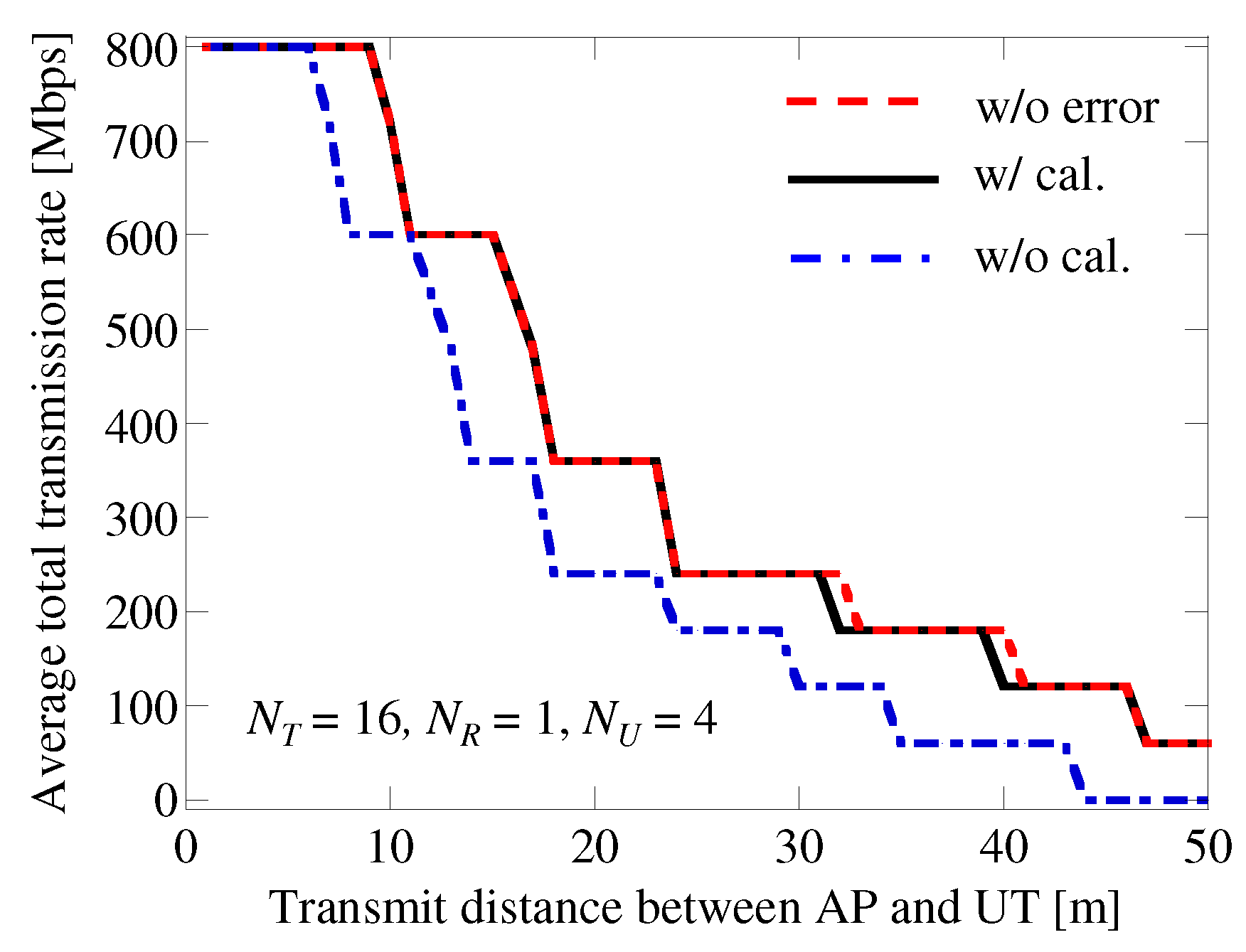
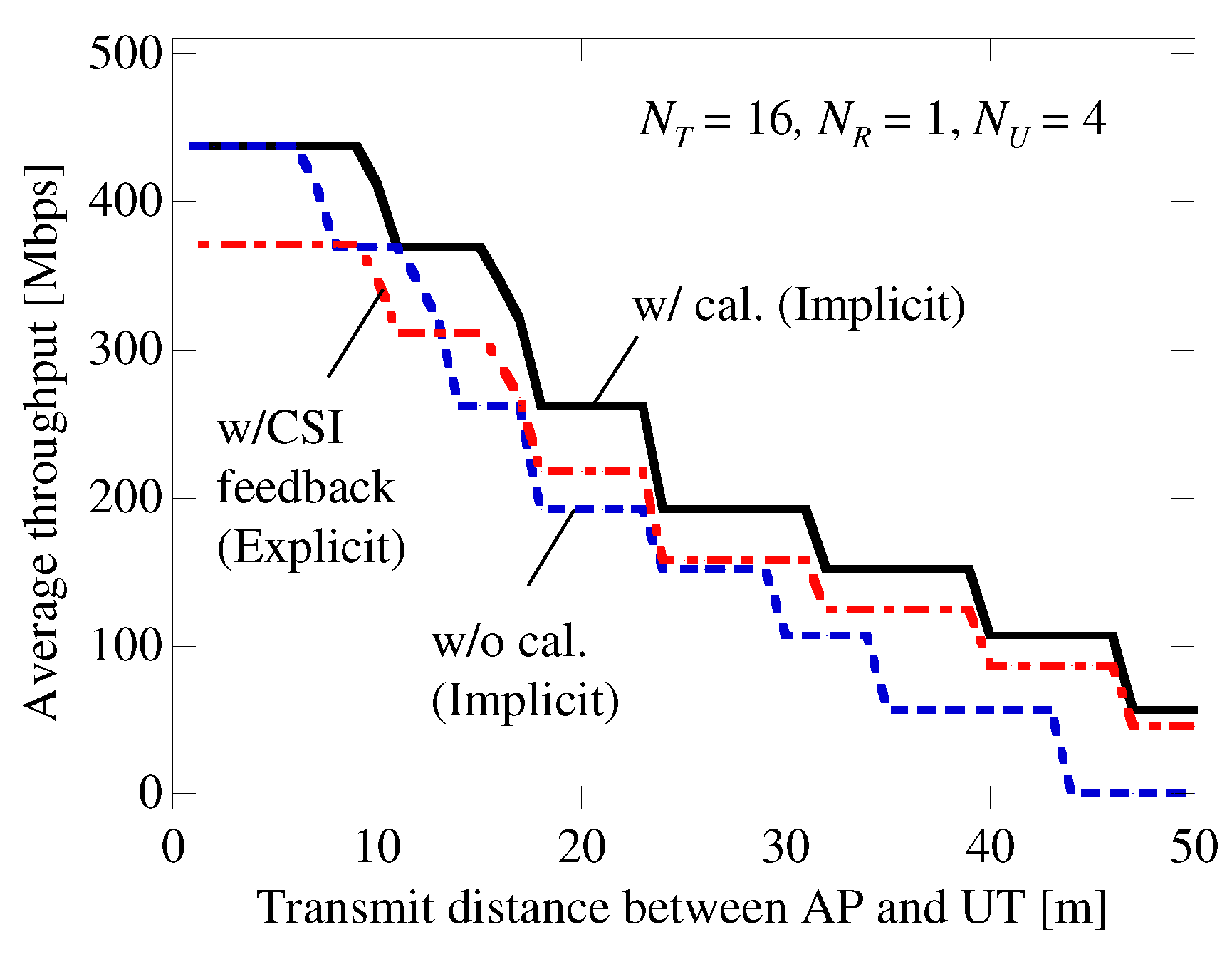
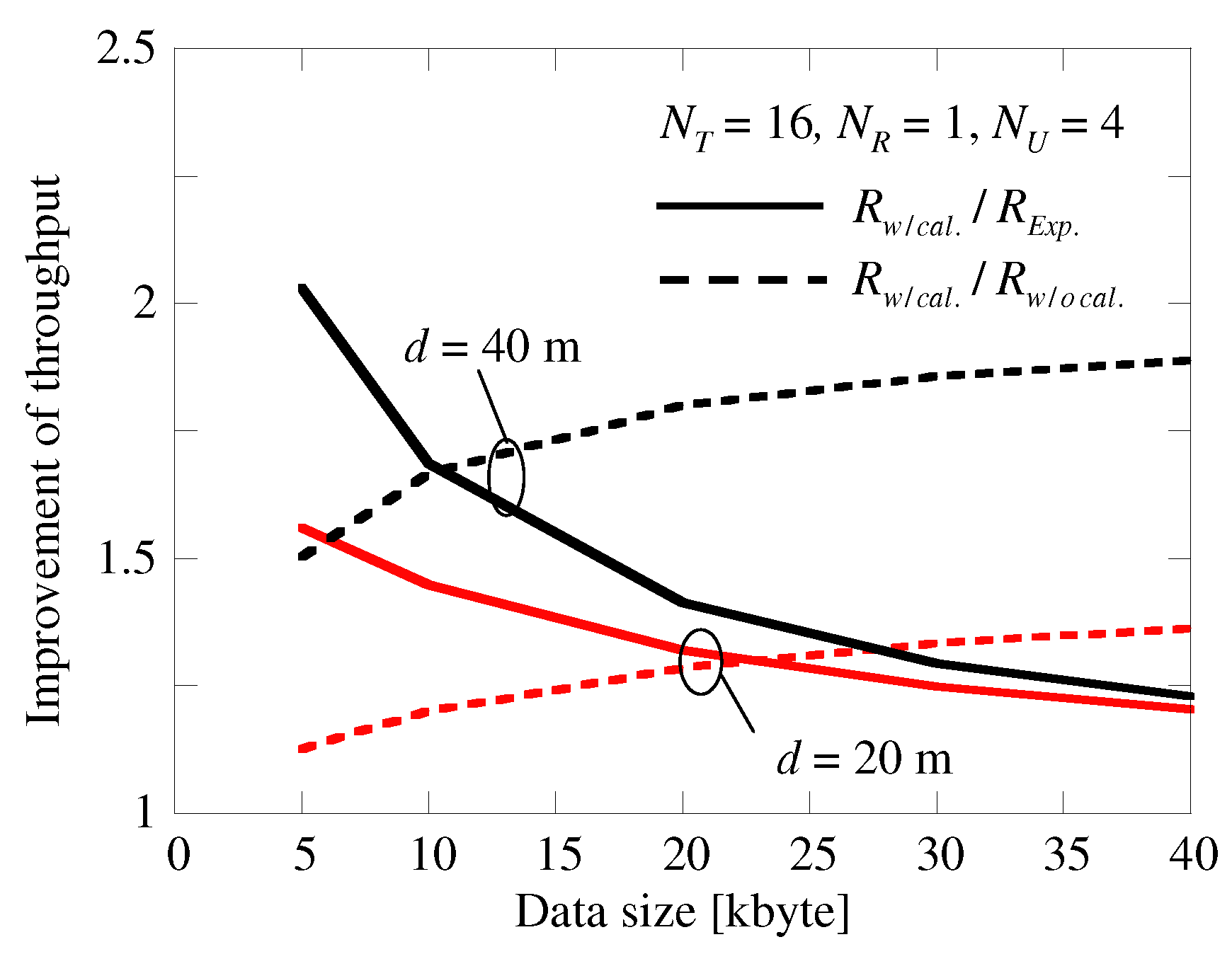
| Number of Base Station Antennas | 16 |
|---|---|
| Array arrangement | Linear array |
| Element spacing | 0.5 wavelength |
| Number of signals | 2 |
| Direction of Arrival of desired signal, | , |
| Direction of Arrival of interference, | 10– |
| Signal to Noise power Ratio(SNR) | 20 dB |
| Propagation condition | Additive white gaussian noise |
| 4, 8, 16 | |
|---|---|
| 1 | |
| 4 | |
| Frequency () | 5200 MHz |
| Bandwidth | 40 MHz |
| Transmit distance (d) | 1–50 m |
| Path loss (L) | |
| Transmit power | 19 dBm |
| Antenna gain | 2 dBi |
| Null Data Packet Announcement | s |
| (NDPA) | |
| Null Data Packet (NDP) | s |
| NDP (for IBF (Implicit beamforming)) | 40 s |
| Beamforming report (BR) | s (max) |
| Beamforming report polling (BA) | s |
| Beamforming (Acknowledgement)ACK (BA) | s |
| Beamforming ACK request (BAR) | s |
| Frame aggregation | 5000– byte |
| Modulation | Rate | Rmin | TR (Mbps) | SNR (dB) |
|---|---|---|---|---|
| BPSK | 1/2 | −79 | 15 | 6 |
| QPSK | 1/2 | −76 | 30 | 9 |
| QPSK | 3/4 | −74 | 45 | 11 |
| 16-QAM | 1/2 | −71 | 60 | 14 |
| 16-QAM | 3/4 | −67 | 90 | 18 |
| 64-QAM | 2/3 | −63 | 120 | 22 |
| 64-QAM | 3/4 | −62 | 135 | 23 |
| 64-QAM | 5/6 | −61 | 150 | 24 |
| 256-QAM | 3/4 | −56 | 180 | 29 |
| 256-QAM | 5/6 | −54 | 200 | 31 |
© 2017 by the authors. Licensee MDPI, Basel, Switzerland. This article is an open access article distributed under the terms and conditions of the Creative Commons Attribution (CC BY) license (http://creativecommons.org/licenses/by/4.0/).
Share and Cite
Nishimori, K.; Hiraguri, T.; Mitsui, T.; Yamada, H. Effectiveness of Implicit Beamforming with Large Number of Antennas Using Calibration Technique in Multi-User MIMO System. Electronics 2017, 6, 91. https://doi.org/10.3390/electronics6040091
Nishimori K, Hiraguri T, Mitsui T, Yamada H. Effectiveness of Implicit Beamforming with Large Number of Antennas Using Calibration Technique in Multi-User MIMO System. Electronics. 2017; 6(4):91. https://doi.org/10.3390/electronics6040091
Chicago/Turabian StyleNishimori, Kentaro, Takefumi Hiraguri, Tsutomu Mitsui, and Hiroyoshi Yamada. 2017. "Effectiveness of Implicit Beamforming with Large Number of Antennas Using Calibration Technique in Multi-User MIMO System" Electronics 6, no. 4: 91. https://doi.org/10.3390/electronics6040091
APA StyleNishimori, K., Hiraguri, T., Mitsui, T., & Yamada, H. (2017). Effectiveness of Implicit Beamforming with Large Number of Antennas Using Calibration Technique in Multi-User MIMO System. Electronics, 6(4), 91. https://doi.org/10.3390/electronics6040091





